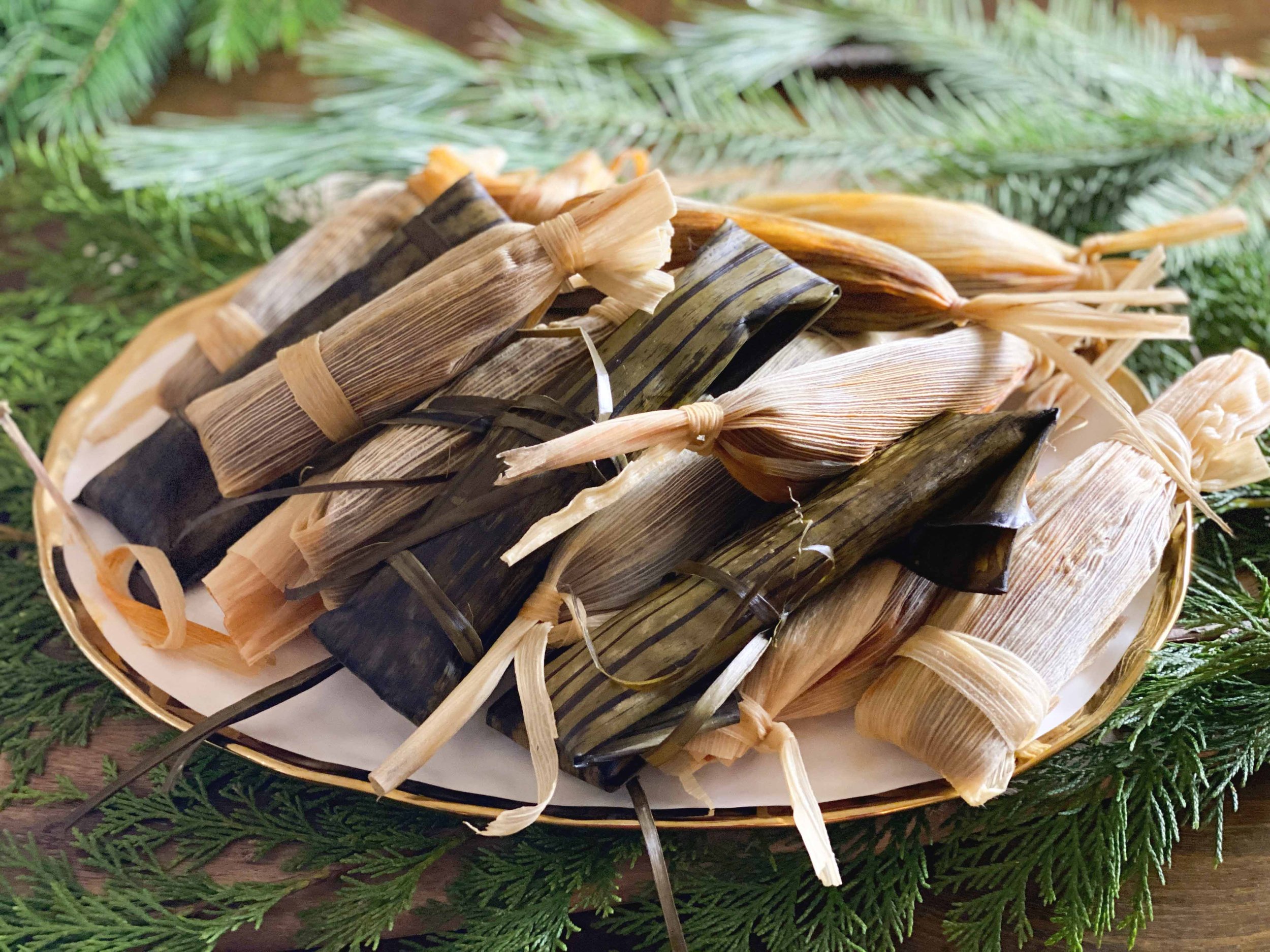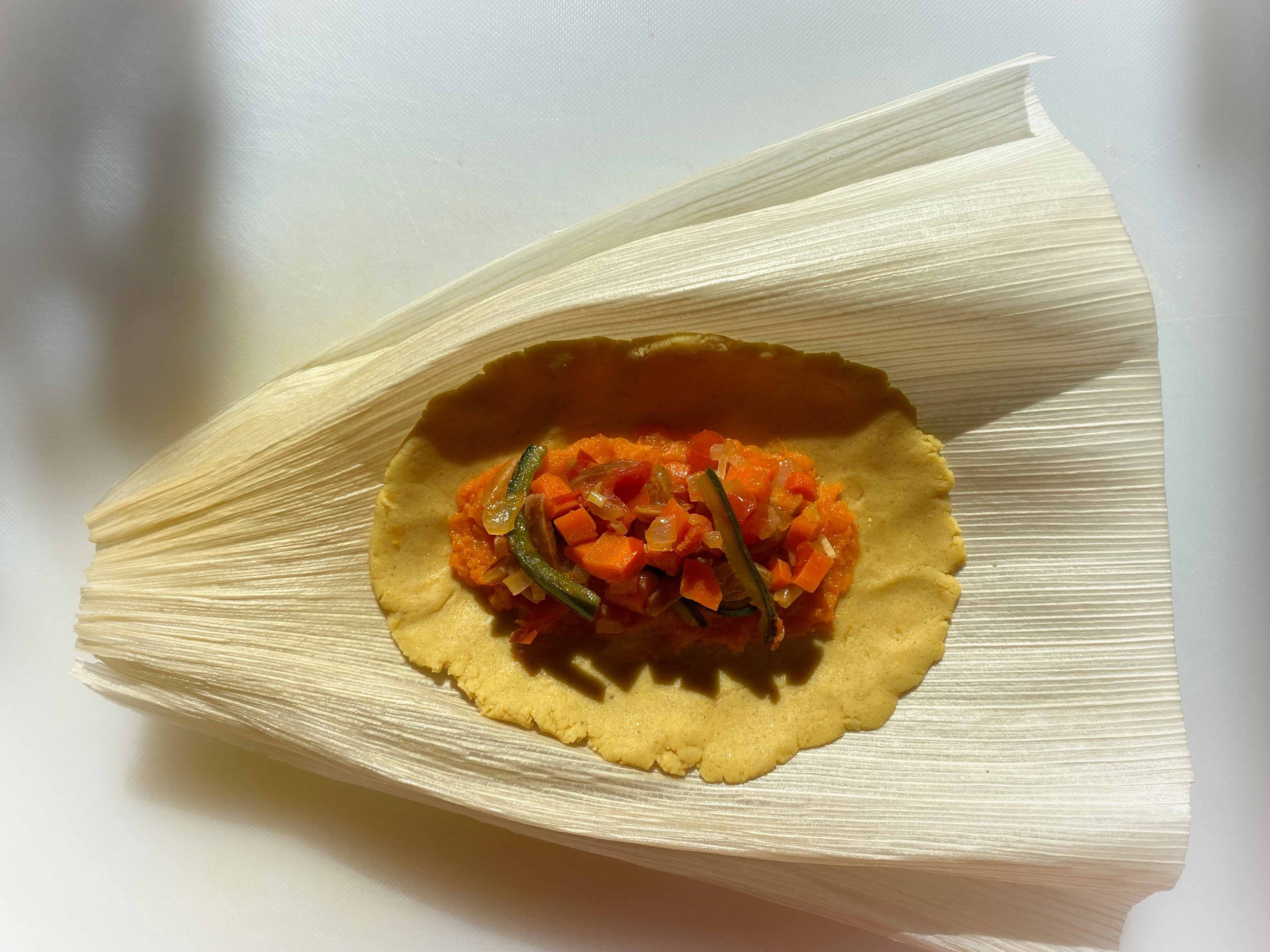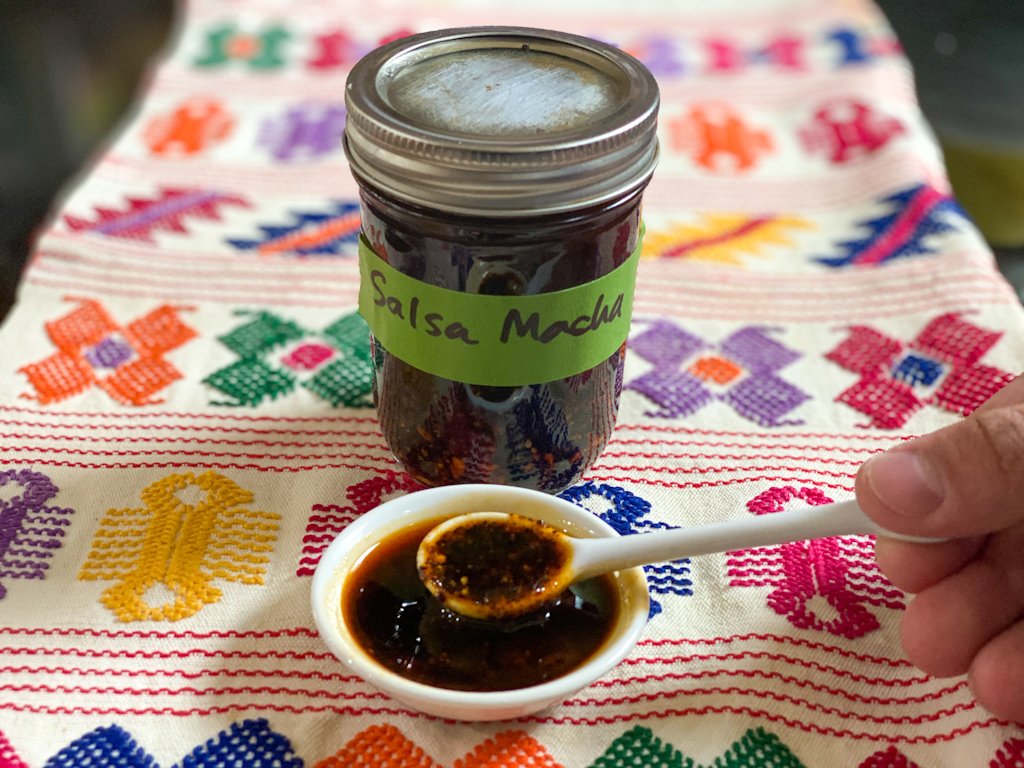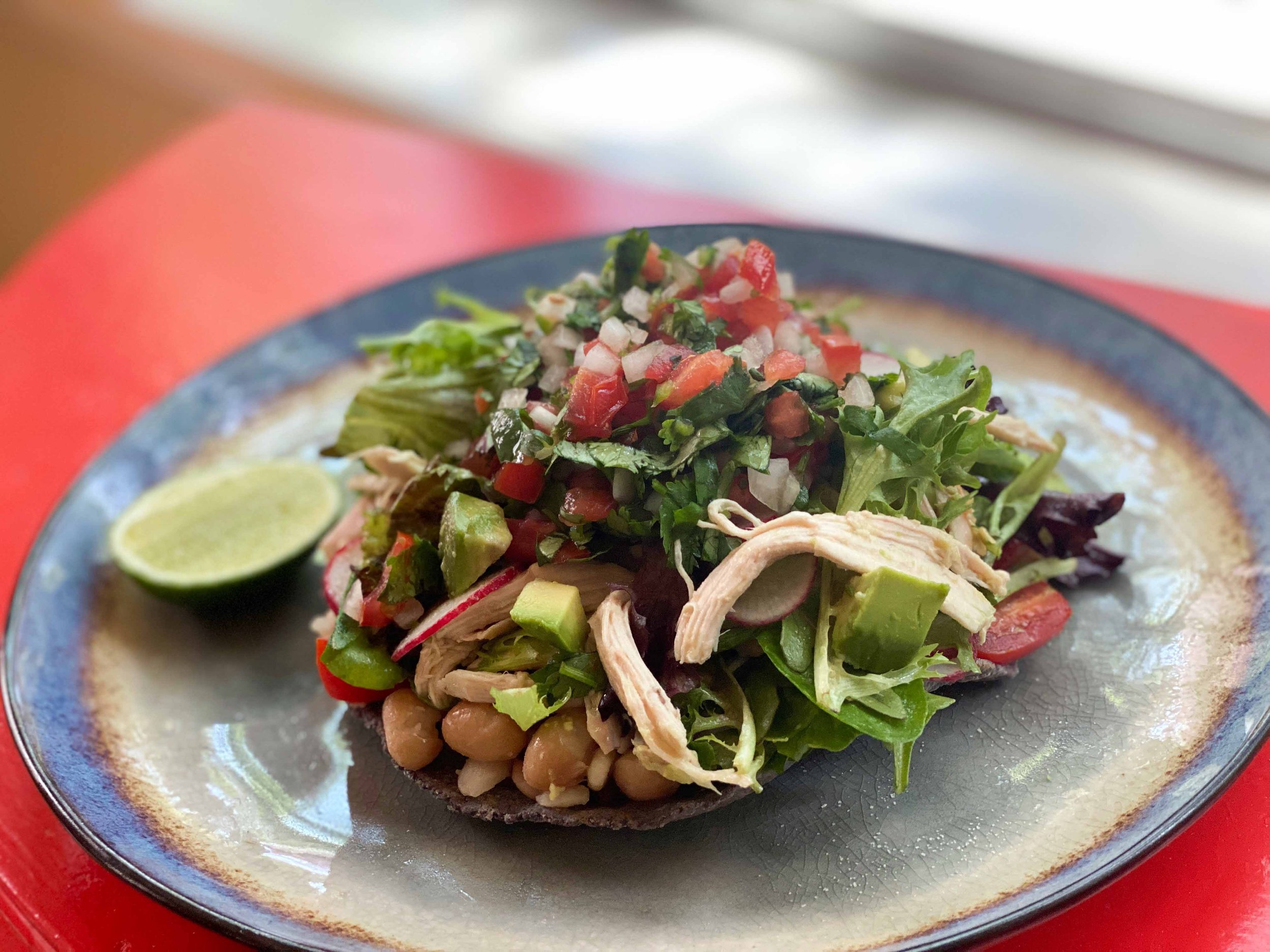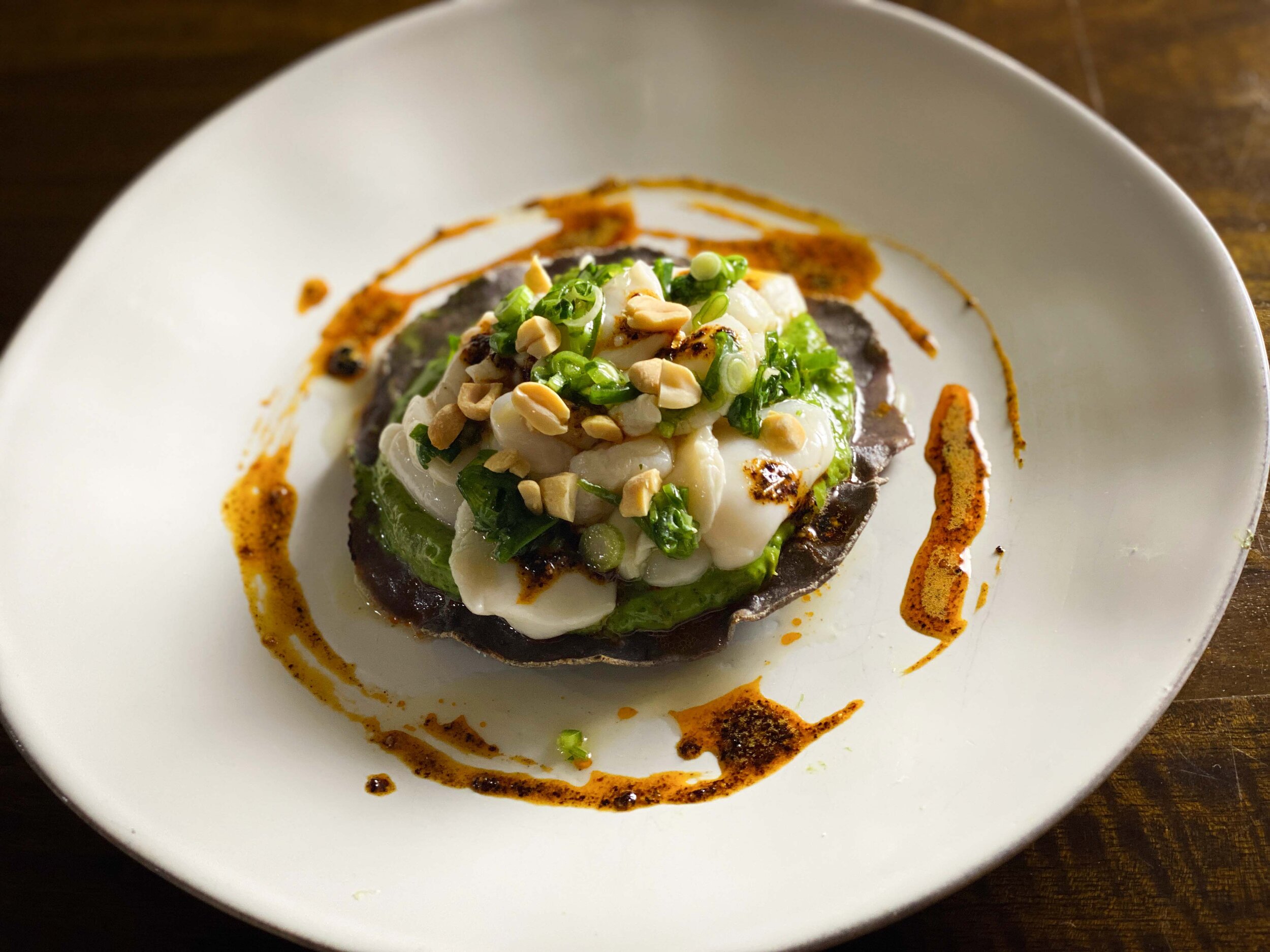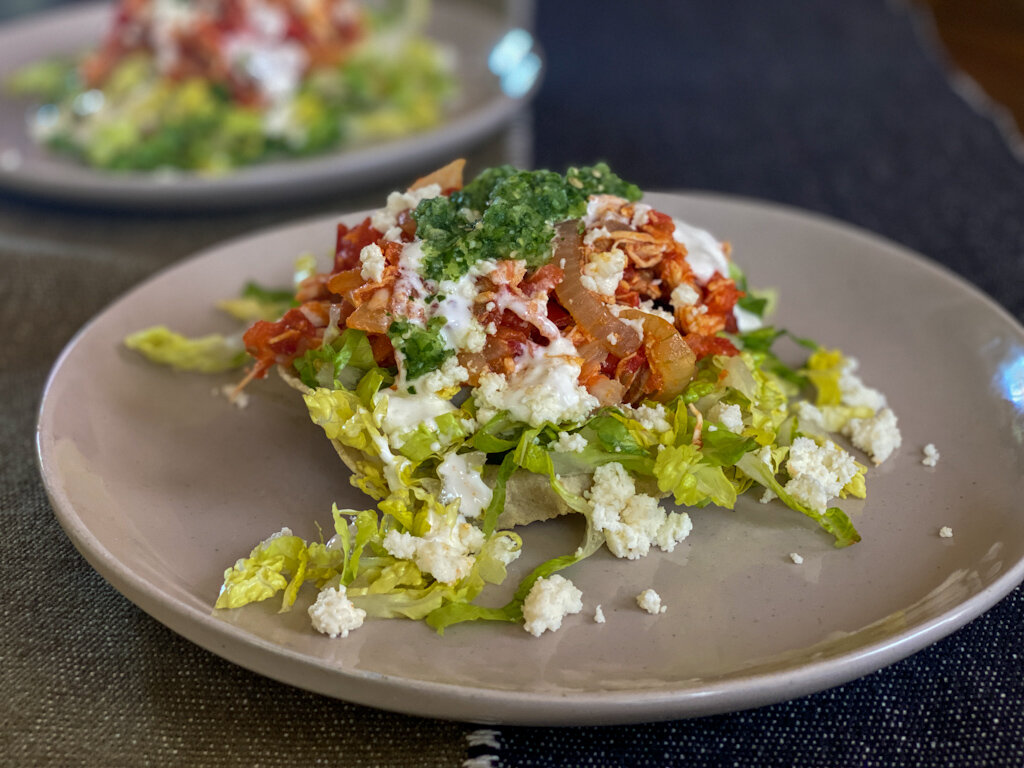By Leslie Brenner
[Editor’s note: This article was first published, in slightly different form, on Dec. 8, 2021.]
If you’ve always wanted to try making tamales for Christmas, but something inevitably got in the way (yep, it sounds pretty intimidating!), this is a great year to dive in with your maiden effort. It’s super fun, the rewards are great, and it’s easier than you might think.
Best of all, heirloom corn masa harina is now widely available. It makes tamales that are about a thousand times better than those made with Maseca or other commercial masa harina. I love the product from Masienda, which is now available at many fine supermarkets (including Whole Foods Markets), as well as through Amazon. Choose any color you like — yellow, white, blue, red, or more than one. King Arthur also sells an organic masa harina that’s much better than Maseca.
READ: “The Masa Life, Part I: How heirloom corn masa harina can transform everyday cooking”
How do blue corn tamales filled with duck in dark mole sound? Or vegan tamales filled with roasted sweet potato and vegetable picadillo — served with salsa macha? Yes, I thought so!
Why tamales, why now?
Until a few years ago, I thought that making tamales might not be worth the trouble. Most tamales I’d ever eaten — even those that came wrapped in great reputations — had just been OK at best. Usually the masa was not terribly flavorful, often on the heavy side, with not enough (or not delicious enough) filling.
Then I tasted Olivia Lopez’s tamales, made with masa fashioned from heirloom corn. (As you know if you’ve been reading Cooks Without Borders’ Mexican cooking features for any length of time, we are super fortunate to have Olivia as our resident Mexican cooking expert.) Of course much of her tamales’ lusciousness is thanks to her skill and palate — as chef and co-owner of Molino Olōyō in Dallas, the smashing tamales Olivia has been selling since last year through her Instagram feed quickly developed a cult following. (She doesn’t yet have a brick-and-mortar location.)
But another big part of the reason for Olivia’s tamales’ great flavor is the quality of the heirloom corn from Mexico that she nixtamalizes to make her masa.
For a story I published in The Dallas Morning News a few years ago, Olivia developed a recipe for a Sweet Pineapple Tamal using then-newly available heirloom masa harina from Masienda, and the tamales were spectacular.
And so (Christmas lightbulb illuminating — ding ding ding!) for the holiday season, Olivia developed and shared with us two savory tamal recipes using heirloom masa harina.
They’re out of this world — and believe it or not, not difficult to make.
First is the vegan tamal — one that gets its lushness from coconut oil, rather than the usual lard. It’s filled with roasted sweet potato and a vegetable picadillo. “That picadillo is inspired by the one my Grandma Margarita used to make,” says Olivia. The confetti-like sauté of onions, carrots, tomato, chiles, golden raisins and more is also versatile beyond tamales; if you have any left over, you can use it to fill tetelas, sopes or quesadillas. (I filled tetelas with a little extra picadillo and roasted sweet potato — fantastic.)
In Mexico, Olivia tells us, tamales are usually eaten on their own, generally not with any salsa. “Usually you just have them with atole,” she says. “Masa on masa!” (Atole is a sweet, hot drink made with masa.) But she loves the late-autumn/early winter flavors of the vegan tamal with salsa macha — and we happen to have a great recipe for that, as well (Olivia’s!).
Our second tamal — blue corn filled with pato en mole oscuro (duck in dark mole) — has a saucy flourish as well: a quickly put-together chimichurri-like salsa made from dried tart cherries, chives (or scallion tops), parsley and lime. “It balances the rich, earthy mole,” says Olivia. Beautifully, I would add.
The tamal’s filling is achieved by roasting duck legs (easy), then saucing the shredded duck in a dark mole that’s also easier to put together than I imagined. (Empowering!) You can use the duck fat that renders when you slow-roast those legs to enrich the masa, or use olive oil — again, no lard. Our instructions have you wrap the tamales in banana leaves before steaming, but corn husks work just as well. The vegan tamales call for corn husks, but they’re also interchangeable — as is the color of heirloom masa harina you use, yellow, blue, rose or white.
Don’t freak out when you see the long recipes — the reason for their wordiness is we’re holding your hand tight, to make sure you’re comfortable with what may be a new process, and to ensure you get great results. To that end, we put together a tip sheet.
Here’s the recipe for the duck mole tamales.
And finally, here is the recipe for Olivia’s Sweet Pineapple Tamales. We love pineapple’s sunny and bright flavor during winter’s chill — makes us (almost!) feel we’re in Colima, Mexico, Olivia’s home town. If only!
Want to keep the Sweet Pineapple Tamal vegan? Easy to do — the crema garnish is optional. And all three are gluten-free.
Happy Tamalidays!
Browse our Cooks Without Borders CookShop
Browse our Cooks Without Borders Cookbook Shop

